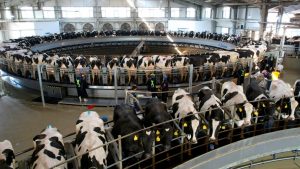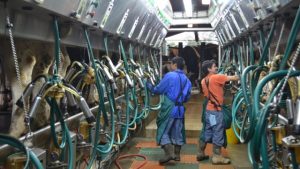
In addition to their influence on sensory profile, starter cultures also affect other functional properties of the finished product, such as stretchability in Mozzarella cheese.
Various species of lactic acid bacteria can be combined, depending on: the speed of acidification, the temperature required for curd maturation and other aspects (production of aromas, exopolysaccharides, specific proteolytic processes, etc.). However, we can say that Streptococcus thermophilus is always present, while thermophilic lactic acid bacteria (L. delbrueckii subsp. lactis, L. delbrueckii subsp. bulgaricus, L. helveticus, which are more involved in proteolytic and peptidolytic mechanisms) can be present in different proportions.
In Italy, typical Mozzarella cheeses produced according to a product specification are obtained with the use of wither a natural whey starter (such as Mozzarella di Bufala Campana PDO and Mozzarella di Gioia del Colle PDO) or a natural milk starter (as established for Mozzarella TSG). The use of these two starters links the product to its territory or its traditional making process, however it can lead to high variability among each production since their composition is not precisely defined and may contain other types of microorganisms (yeasts and also pathogens).
For a standardised process, the use of selected starter cultures allows for better control and repeatable processes.
After the curd is broken up, it is subjected to lactic fermentation conducted by lactic acid bacteria: the effect of lactic acid is responsible for the maturation of the curd. This process progressively increases acidity: as a result, the structure and rheological characteristics of the curd change continuously. When pH ranges from 5.5 to 4.6, the size of casein micelles is reduced progressively, while its attitude to stretchability increases.
The optimal value of pH for a good stretching process is 5.25-4.95. The attitude to stretchability diminishes if the pH drops below this value. Starting stretching at the right pH value is essential since at higher acidity levels the curd demineralizes excessively and, thus, loses ist stretchability properties and leads to a loss in product yield.
To this end, quality and quantity of microorganisms composing the starter cultures are essential aspects to avoid technological issues during curd maturation. Moreover, the preparation of natural starters requires a high level of food safety culture in dairy farms and processing plants.
In this context, a successful acidification will sketch out the stretching process and, then, the final product and its shelf-life. One key aspect of using natural whey starters is that the biodiversity of the microflora strongly influences the variability of the sensory profile of the finished Mozzarella, although it is one of the main factors defining the typicality of Mozzarella.
Scientific research (Di Renzo et al., 2009) tried to develop a multiple strain starter containing Lactobacillus delbrueckii ssp. bulgaricus, Streptococcus thermophilus and Lb. Rhamnosus was part of a project that aimed at standardizing the quality, increasing water‐buffalo Mozzarella cheese shelf‐life, while protecting its typical flavour characteristics. With this multiple strain starter, the authors were able to reach an excellent product reproducibility for both rheological and sensory properties. They concluded that this starter can be used to control the variability of water‐buffalo Mozzarella cheese, while maintaining its typical flavour.
At Alpha Solutions, we have developed solid experience in the selection, production, definition and use of starters in milk processing over the years. We can offer a broad variety of services, aimed both at the proper selection of starter cultures and the management of self-produced starter cultures such as natural whey cultures.
References
Addeo F., 1998. Formaggi da latte di bufala. Aspetti microbiologici e tecnologici. L’allevamento bufalino in Italia. Ieri oggi e domani, «I Georgofili. Quaderni», 1998-IV, Giornata di Studio, Firenze, 30 aprile 1998.
Di Renzo, Di Luccia, Succi, Reale, Tremonte, Trani, Capilongo, Coppola, Sorrentino, 2009. The flavour profile of Mozzarella cheese: natural vs. defined starter cultures. International Conference: Methods and issues in cheese authenticity studies At: Avellino, Italy.
Marco Loguercio
Senior Technical Consultant
Alpha Solutions, Food and Ingredients
mlo@alpha-solutions.it





















